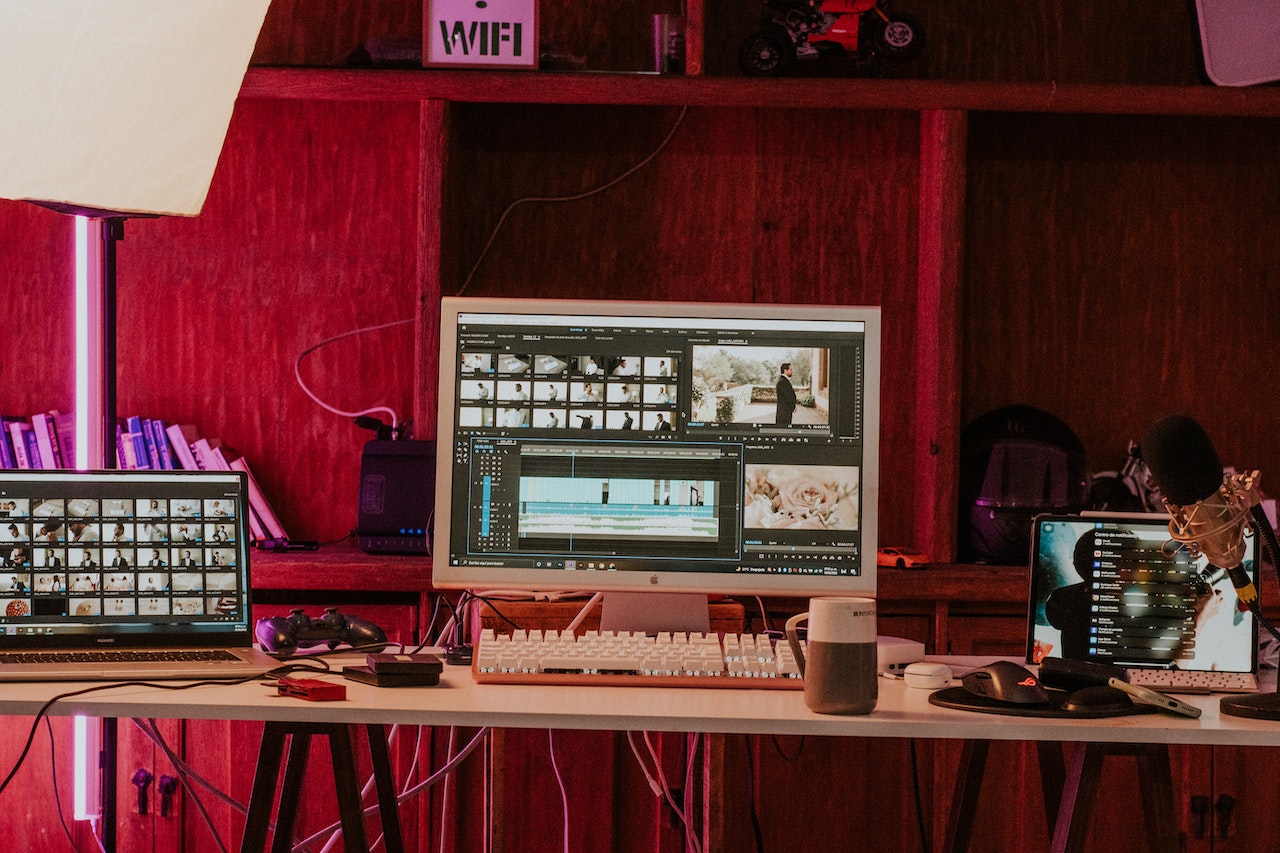January 1, 2023
How to Create Reactions Videos

Grant
Learn everything there is to know about reactions videos and how to make them.
What is a reaction video?
A reaction video is a video where someone reacts to something — often a video on the internet or social media.
Reaction videos can be found on YouTube, Tiktok, Instagram, Facebook, even Twitter and Linked. People also post reaction videos on their own websites or blogs.
Reaction videos can take many different forms. Some reaction videos are simply recordings of someone's reaction to something.
Others are more elaborate, featuring the person reacting and also adding commentary or analysis. Some are also staged, with actors reacting to something in a funny or dramatic way. Often you will see a shot of the person’s face on one side of the video, and on the other side you’ll see the original video being reacted to. The viewer can can watch the two simultaneously.
Why do people make reaction videos?
Reaction videos can be used for different things. Some people make them for fun, while others make them to share opinions, start a discussion, or raise awareness about a certain issue.
Reaction videos are entertaining. Both long form and as a YouTube Short.
For one, it’s interesting to see how someone else reacts to something that you have already seen. Additionally, reaction videos often offer a different perspective on the thing being reacted to, which can be enlightening. Finally, reaction videos are often funny — humans naturally enjoy witnessing other people’s reaction.
Rainbolt is a Geoguesser player who has recently gone viral on social media for his ability to guess where he is on Google Maps in a short amount of time. Here's a video of him reacting to some of his most viral videos.
How to make reaction videos:
There are two main approaches:
Record yourself reacting and then add the video later in a video editor
Record yourself watching and screen record the video at the same time (easier)
Using a video editor
For the first approach here are the main steps:
Find your video.
Set up your camera (webcam, iPhone, external camera)
Start recording yourself and then play the video you’re reacting to on another screen (your computer, phone, etc.).
Stop the recording of yourself and save that as a video file.
Now you need the video file for the video you were reacting to. If the video was originally on the web you’ll need to download it.
Once you have the two video files (the recording of your reaction, and the video you were reacting to) open them both in a video editor. You can use a desktop-based video editor, web-based video editor, or mobile-based video editor. Which is best for you will depend on how you recorded and download the files.
In the video editor line up the two videos on the timeline so that your reactions appear at the right time in the original video.
Then make sure that both your reaction and the video are visible at the same time. You’ll need to arrange the two layers on the canvas so that they appear next to one another, or slightly overlapping.
Save and export your project as a new video file.
You now have a reaction video ready to share with the world.
Using Tella
For the second approach you can use an app like Tella to record yourself and the video you’re reacting to at the same time. Here’s how to do that:
First, sign up for Tella here.
You’ll need to find a video on the web for this approach to work. You can use YouTube or Tiktok on your computer.
Back in Tella set up your recording by enabling your camera, microphone, and then sharing your screen.
To share your screen, make sure to pick the tab that has your video and double-check that “Record tab audio” is selected.
Now start the recording. This will capture you and the original video at the same time.
When you’re done, stop the recording in Tella. This will save your video and create your reaction video.
In Tella’s editor you can customise the layout, background, and make any additional edits. When you’re happy with it, you can share the video as a link or download it as an mp4 file so that you can publish to YouTube, Tiktok, Twitter, Instagram, etc.
Watch the video below for how to do this. Or learn more about reaction videos with Tella here.
viewer-commentHow to make YouTube reaction videos
For YouTube reaction videos, these are the main things to think about.
First find a video on YouTube that you want to react to
Then record your reaction video using one of the two methods mentioned above
Important tips when reacting to YouTube videos:
undefinedundefinedundefinedIf you’re making a YouTube reaction video you probably want to publish your video to YouTube too. So export your Youtube video file of your reaction video and upload it to YouTube.
How to make Tiktok reaction videos
For reaction videos on Tiktok here’s what you need to consider:
First find a video on Tiktok that you want to react to
Then record your reaction video using one of the two methods mentioned above, or using Tiktok’s own Duet feature.
Important tips when reacting to Tiktok videos:
undefinedIf you’re making a Tiktok reaction video you probably want to publish your video to Tiktok as well. So export a video file of your reaction video and upload it to Tiktok. You can upload to Tiktok from their website or on your phone.
Do I need to worry about copyright claims when creating a reaction video?
There isn’t a sole answer to this question, as laws vary from country to country. In general, however, reaction videos are generally considered to be covered by fair use laws. This means that they can be used without the permission of the copyright holder, as long as the use is for the purpose of criticism, commentary, or education. Always be considerate when using or talking about other people’s work in your own.
What about music reaction videos?
Want to know how to make music reaction videos? It’s a similar formula. To make a music reaction video on your computer, try the following:
Open Spotify in your web browser
Use Tella to record your camera and screen record the tab with Spotify open.
Make sure “Record tab audio” is selected
When you’re done recording you can customise the layout, appearance, and make additional edits.
Share your video as a link or download it as an mp4 file do that you can publish to the web.
Watch the video below for how to do this.
People also ask
How do reaction videos make money?
Reaction videos make money primarily through ad revenue. When a reaction video is uploaded on a platform like YouTube, the creator can monetize the content through YouTube's Partner Program. This allows ads to be displayed on or during their videos, and they earn money based on the number of views and interactions these ads receive. The more views a video gets, the more ad impressions are made, leading to higher revenue.
Are reaction videos legal?
Reaction videos can be legal, but it largely depends on how they are created and used as mentioned earlier. The legality of reaction videos often falls under the concept of "fair use" in copyright law. Fair use allows limited use of copyrighted material without permission from the copyright holder for purposes such as criticism, parody, news reporting, research and education.
How to edit reaction videos?
Editing reaction videos involves several steps. First, you need to record your reaction. This can be done using a webcam or a camera as explained above. Once you have your reaction footage, you need to obtain the video you are reacting to. The next step is to make the final video - we've detailed the steps on how to do this above.
How to get views on reaction videos?
Getting views on reaction videos involves a combination of creating engaging content, optimizing for search, and promoting your videos:
Choose popular, trending, or viral content to react to.
Make sure your reactions are genuine, entertaining, and add value to the original content.
Use a good quality camera and sound equipment to ensure your video is clear and audible.
Optimize your videos for search by using relevant keywords in your title, description, and tags.
Create eye-catching thumbnails and compelling titles to attract clicks.
Promote your videos on social media, your website, or other platforms to reach a wider audience.
Engage with your viewers by responding to comments and asking for likes, shares, and subscriptions.
Make your own reaction video
To make your own reaction videos in the browser, sign up for Tella today (free to start).



